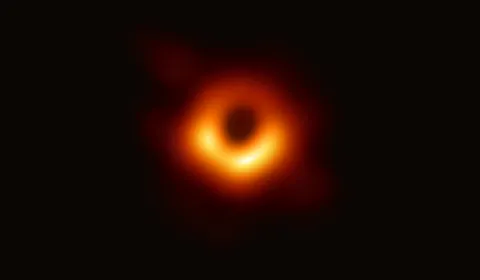Black and White - Holes of a Different Color

This week, my column is going to be diving into stuff I really don’t know much about. I’m not feeling too inferior though. No one knows much about this topic, even people who are deemed experts are really just scratching the surface. So, you can roll your eyes and shake your head at some of the things I’m going to say, but it won’t rattle me in the slightest – and not just because I can’t see you on the other side of your computer or phone screen.
On Wednesday, April 10, 2019, scientists working at the Event Horizon Telescope released the first-ever photographic evidence of the previously only theorized deep space object known as a black hole. A black hole is the remains of a collapsed star. Its mass and associated gravitational pull are so immense that nothing, not even light, can escape. It’s hard to imagine. It boggles the mind. It’s so difficult to grasp that scientists around the world argued about the possibility that such a thing could even exist – until that day in April.
So where is this big honking telescope, you ask? The answer is that it’s all over the place. The Event Horizon Telescope (EHT) is actually a network of radio telescopes placed in strategic locations all over the world. They work together, collecting data from places so far away that the images they gather started their journey to us millions of years ago.
The black hole photograph assembled by the data from the EHT depicts an object fifty-five million light years distant. That’s right - fifty-five million light years. The light in the picture you see at the top of this article started out fifty-five million years ago. The object itself is at the center of a neighboring galaxy called M37 and has a mass over six and a half billion times that of the star we call the Sun, yet the object itself takes up practically no space. What becomes visible is the area called the event horizon, the point of no return for anything unlucky enough to venture close to a black hole.
When you think about all of this, it’s easy to see why the plausibility of something like a black hole has been the subject of debate for so long. Now that we have a picture, it’s kind of hard to deny that black holes are indeed real. We’ve been able to detect the effects of black holes for years, but without direct evidence, there was always some doubt. One photograph, which took two years to process from data gathered by a telescope the size of a planet, removes that doubt.
So, what’s next?
Switch the gears of your brain for a moment and think about the absolute opposite of a black hole. Theoretically, such an object might exist in the form of a white hole. While nothing can escape a black hole’s event horizon, nothing can enter the event horizon of a white hole. The white hole has mass and gravitational force, but nothing gets in.
To be clear, the dominant opinion among scientists today is that white holes cannot and do not exist. The concept is purely theoretical – but that’s what we used to say about black holes. Emerging thought in the field of quantum physics is starting to challenge disbelief in white holes. They may indeed exist. If they do, what the heck are they?
Some scientists think they may be the “other end”, so to speak, of black holes. All of that matter pouring into a black hole has to go somewhere, right? The black hole is already collapsed down into the absolute smallest size it can possibly be. There’s no more room for new stuff. Maybe it’s pouring out of the other end of a wormhole defined by a black hole/white hole pair. Maybe the other end of this tunnel is at a different place in time and space. Maybe something truly strange happens at the singular point in space that defines the center of a black hole. Maybe there’s a kind of “bounce” that reflects all of the incoming matter doomed by the grip of the black hole into another direction – or even another point in time. We don’t know. We have no rules to apply to be sure. We have no pictures, yet.
This article was written by Tilmer Wright, Jr. Tilmer is an IT professional with over thirty years of experience wrestling with technology and a proud member of the Authors Guild of Tennessee. In his spare time, he writes books. His second novel, The Bit Dance is a cautionary tale about what can happen when technology runs away from its creators. You can find links to Tilmer’s books at the following location.
https://www.amazon.com/Tilmer-Wright/e/B00DVKGG4K%3Fref=dbs_a_mng_rwt_s…
His author information web site is here: http://www.tilmerwrightjr.com/
- Log in to post comments